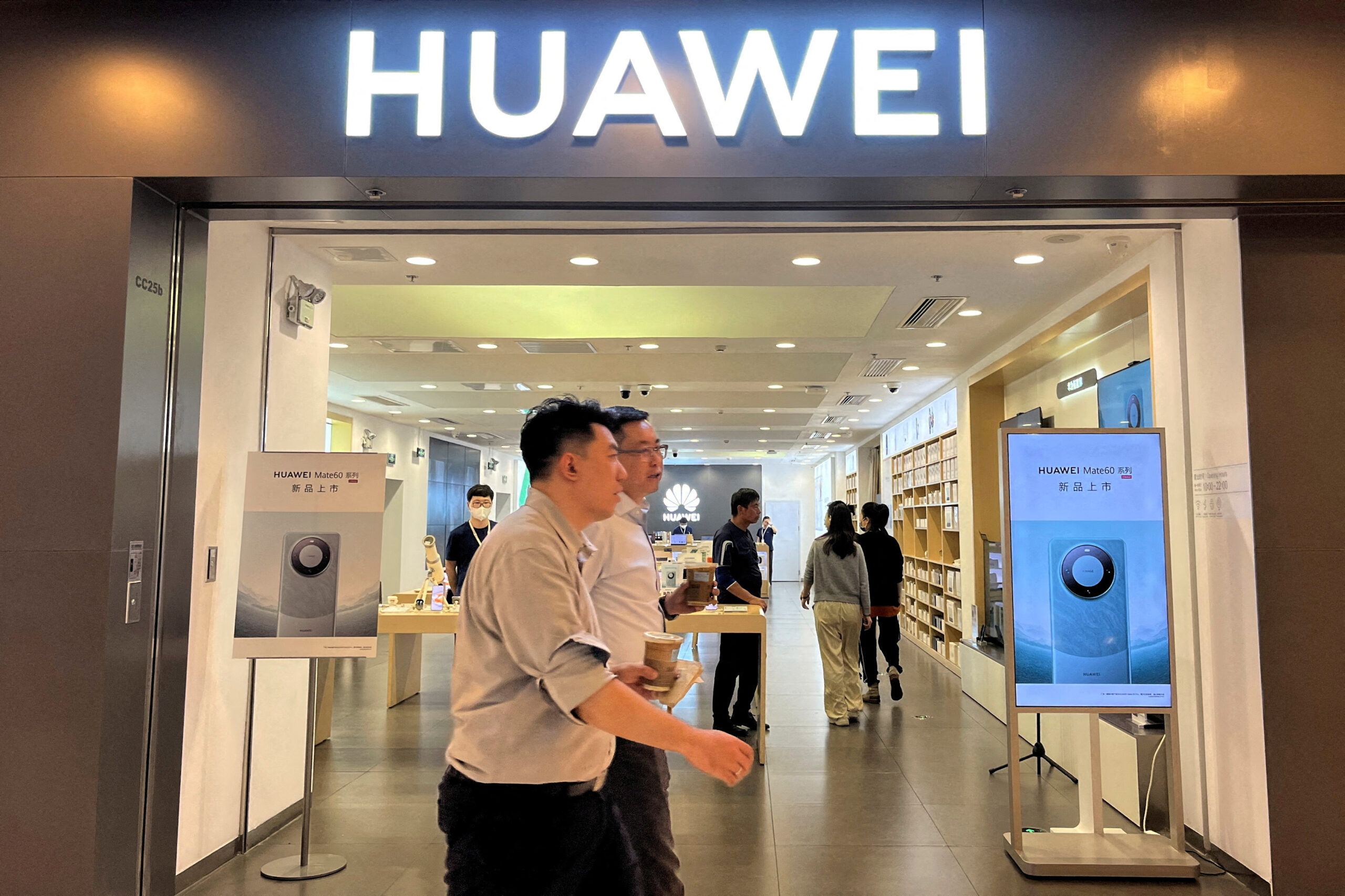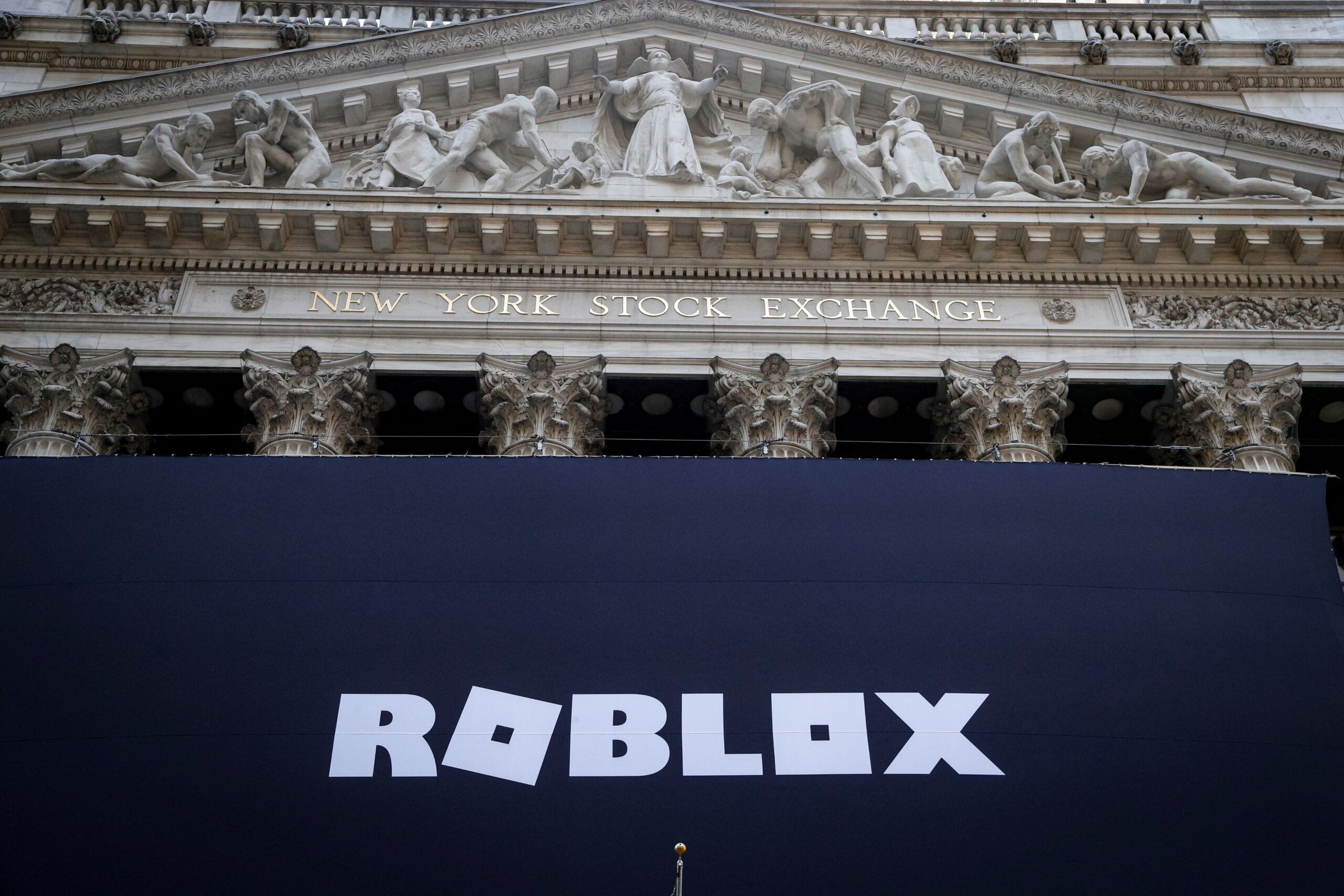Cramer’S Week Ahead: Pay Attention to the Federal Reserve’S Meeting
Pay attention to the Federal Reserve’s meeting as it will have a significant impact on the week ahead. This meeting holds the potential to shape market trends and influence investor sentiment in various sectors.
With the power to determine interest rates and implement monetary policies, the Federal Reserve’s decisions often ripple through the global financial landscape. As stakeholders eagerly anticipate this meeting, analyzing its outcomes becomes crucial for informed decision-making and potential opportunities. Investors should stay abreast of the Federal Reserve’s announcements to gain insights into the future direction of the economy and ensure timely adjustments to their portfolios.
We will delve into the importance of the Federal Reserve’s meeting and its potential implications for the market.

Credit: www.cnbc.com
The Importance Of The Federal Reserve’S Meeting
The Federal Reserve’s upcoming meeting holds significant importance, as investors should closely monitor its outcomes. CNBC’s Jim Cramer highlights the need to pay attention to the Federal Reserve’s decisions and their potential impact on the market.
The Federal Reserve’s meetings hold significant importance for the economy and financial markets. It is crucial to understand the impact of the decisions made by the Federal Reserve during these meetings, as they can have far-reaching effects on various sectors.
Let’s dive into the details of why paying attention to the Federal Reserve’s meeting is crucial:
Understanding The Impact Of The Federal Reserve’S Decisions:
- Interest rates: The Federal Reserve’s decisions on interest rates can have a direct impact on borrowing costs for businesses and individuals. By raising or lowering interest rates, the Federal Reserve influences the cost of borrowing money, which in turn affects spending, investment, and economic growth.
- Inflation management: The Federal Reserve also plays a vital role in managing inflation. Through its monetary policy tools, it aims to maintain stable prices and prevent either excessive inflation or deflation. The decisions made during the meetings reflect the Federal Reserve’s assessment of the economy’s current state and its outlook for inflation.
- Financial markets: The Federal Reserve’s actions can significantly impact financial markets, including stocks, bonds, and currencies. Anticipation and interpretation of the Federal Reserve’s decisions often lead to market volatility. Investors closely watch for any signals regarding future policy changes, which can influence investment strategies and overall market sentiment.
- Economic stability: The Federal Reserve’s primary mandate is to promote maximum employment and price stability. Its decisions are aimed at fostering a stable and growing economy. Understanding their assessment of the economic conditions can provide valuable insights into the overall health of the economy and its future trajectory.
- Global effects: The Federal Reserve’s decisions reverberate beyond U.S. Borders. Global markets closely monitor its actions, as they can influence global liquidity, capital flows, and exchange rates. Changes in U.S. Monetary policy can have profound implications for economies around the world, especially in emerging markets.
The Federal Reserve’s meetings are of utmost importance due to their significant impact on various aspects of the economy and financial markets. Understanding their decisions regarding interest rates, inflation management, financial markets, economic stability, and global effects can provide valuable insights for investors, businesses, and policymakers.
Stay tuned and pay attention to the outcomes of these meetings as they unfold.
Exploring The Role Of The Federal Reserve In The Economy
The role of the Federal Reserve in the economy is explored in Cramer’s Week Ahead, particularly highlighting the importance of paying attention to the Federal Reserve’s upcoming meeting. Understanding the decisions made by the Federal Reserve can provide valuable insight into the economic outlook.
The Federal Reserve As The Central Bank Of The United States
The Federal Reserve, often referred to as the Fed, is the central bank of the United States. It plays a crucial role in the nation’s economy by conducting monetary policy, regulating banks, and overseeing the stability of the financial system.
Here’s a breakdown of the key aspects of the Federal Reserve’s role:
- Formulating Monetary Policy: The Federal Reserve has the mandate to ensure a stable and sustainable economy. It does so by influencing the supply of money and credit in the economy through its monetary policy decisions. These decisions impact interest rates, inflation rates, and overall economic growth.
- Regulating Banks: The Fed is responsible for supervising and regulating banks to maintain financial stability. This involves monitoring banks’ activities, setting capital requirements, conducting stress tests, and implementing policies to prevent financial crises.
- Controlling the Money Supply: One of the primary tools the Federal Reserve uses to manage the economy is controlling the money supply. It can increase or decrease the supply of money through various mechanisms like open market operations, setting reserve requirements for banks, and adjusting the discount rate.
- Overseeing Payment Systems: The Federal Reserve oversees and operates the payment and settlement systems in the United States. This ensures efficient and secure transactions between banks and individuals, supporting the smooth functioning of the economy.
- Promoting Financial Stability: The Fed actively monitors and addresses risks to the stability of the financial system. It collaborates with other regulatory agencies to identify systemic risks, implement regulations, and mitigate threats to the overall financial health of the country.
- Conducting Research and Analysis: The Federal Reserve conducts extensive economic research and analysis to inform its policy decisions. It tracks key economic indicators, studies market trends, and assesses the impact of its policies on various sectors of the economy.
The Federal Reserve carries out its responsibilities independently, free from political interference, in order to maintain economic stability and foster sustainable growth. By understanding the role of the Federal Reserve, we gain insight into the factors shaping the economy and can better anticipate its future trajectory.
Factors Influencing The Federal Reserve’S Decisions
The Federal Reserve’s decisions are influenced by various factors, which will be highlighted in Cramer’s Week Ahead, including economic indicators, inflation, employment data, and global market conditions. Understanding these factors is crucial for investors and market participants to anticipate the Federal Reserve’s actions and their impact on the financial markets.
The decisions made by the Federal Reserve are crucial for the stability and growth of the economy. As an investor or an everyday consumer, it is important to understand the factors that influence these decisions. Let’s take a closer look at some key factors that the Federal Reserve takes into account when making their decisions.
Economic Indicators And Their Significance
To gauge the health and performance of the economy, the Federal Reserve closely monitors various economic indicators. These indicators provide valuable insights into the overall state of the economy and help shape the Federal Reserve’s decisions. Here are some significant economic indicators and what they signify:
- Gross Domestic Product (GDP): This measures the total value of goods and services produced within a country’s borders. A growing GDP indicates a strong economy and can lead the Federal Reserve to consider tighter monetary policies.
- Consumer Price Index (CPI): The CPI measures changes in the average prices of goods and services purchased by households. Rising inflation, as indicated by the CPI, may prompt the Federal Reserve to increase interest rates to curb inflationary pressures.
- Retail Sales: Retail sales data reflect consumer spending patterns. Strong retail sales indicate a robust economy, while weak sales may suggest a slowdown. The Federal Reserve takes this data into account to assess consumer confidence and potential economic growth.
Inflation And Its Effect On Interest Rates
Inflation plays a significant role in the Federal Reserve’s decision-making process. When inflation rises, the purchasing power of money decreases, impacting the overall economy. Here’s how inflation affects interest rates:
- When inflation is high: The Federal Reserve may increase interest rates to reduce borrowing and spending, which can help control inflation by slowing down the economy.
- When inflation is low: Lower interest rates may encourage borrowing and spending, stimulating the economy and potentially increasing inflation to a healthy level.
Ultimately, the Federal Reserve aims to maintain stable inflation to promote economic growth and stability.
Unemployment Rates And Job Growth
The Federal Reserve also closely monitors unemployment rates and job growth as they are critical indicators of economic health. Here’s how these factors influence their decisions:
- Unemployment rates: In times of high unemployment, the Federal Reserve may lower interest rates to encourage borrowing and stimulate economic activity, leading to job creation.
- Job growth: Strong job growth is a positive sign for the economy, indicating increased consumer spending power and overall economic stability. The Federal Reserve takes job growth into consideration when making decisions about interest rates and monetary policies.
By monitoring these factors, the Federal Reserve aims to balance inflation, employment, and economic growth, ensuring stability and prosperity for the entire economy.
Analyzing The Potential Outcomes Of The Federal Reserve’S Meeting
The potential outcomes of the Federal Reserve’s meeting this week are worth analyzing for market participants. Keeping an eye on the decisions made by the Federal Reserve can provide valuable insights for investors and traders.
The Federal Reserve’s meeting is a highly anticipated event that can have far-reaching implications for the economy. By closely examining the potential outcomes of this meeting, we can gain insights into various aspects of the financial landscape. Here’s what to look out for:
Anticipating Changes In Interest Rates:
- Possibility of interest rate hikes: The Federal Reserve may decide to increase interest rates in order to manage inflationary pressures and support economic growth.
- Impact on borrowing costs: A rise in interest rates could increase the cost of borrowing for businesses and consumers, potentially slowing down economic activity.
- Effects on stock market: Higher interest rates might lead to a shift in investment patterns, causing volatility in the stock market.
Market Volatility And Investor Sentiment:
- Reaction of the stock market: Investors closely analyze the Federal Reserve’s decisions and statements for cues about the future direction of monetary policy. Any surprises or shifts in stance can lead to market volatility.
- Investor sentiment: The Federal Reserve’s meeting can influence market sentiment, leading to changes in investor behavior. Positive indications from the meeting can boost confidence, while negative outcomes may erode trust in the markets.
Implications For Businesses And Consumers:
- Business planning: Changes in interest rates and market volatility can affect businesses’ strategic planning, including investment decisions, expansion plans, and hiring initiatives.
- Consumer borrowing and spending: Interest rate adjustments can impact borrowing costs for consumers, influencing their purchasing power and overall spending habits.
- Real estate and mortgage market: Shifts in interest rates can have a significant impact on the real estate market, affecting mortgage rates, property values, and consumer demand.
By carefully analyzing the potential outcomes of the Federal Reserve’s meeting, we gain valuable insight into the future direction of economic policies and their potential impact on various sectors. Let’s keep an eye on the developments resulting from this influential gathering to better understand the dynamics of the financial landscape.
Key Takeaways To Watch For During The Federal Reserve’S Meeting
Pay close attention to the Federal Reserve’s meeting as there are key takeaways to watch for. Cramer’s Week Ahead highlights the importance of this event.
The Federal Reserve’s meeting is always highly anticipated by investors and analysts alike. It provides valuable insights into the central bank’s current thinking and its future plans for monetary policy. As this meeting approaches, there are several key takeaways to keep an eye on that could have a significant impact on the markets.
We will explore three important aspects to pay attention to during the meeting: statements from Federal Reserve officials, projections for future monetary policy, and potential signals for market trends.
Statements From Federal Reserve Officials:
- Chairperson’s remarks: The Federal Reserve Chair’s opening statement usually sets the tone for the meeting, highlighting important issues and concerns.
- Economic outlook: Officials may provide insights into their assessment of the economy, including indicators they are monitoring and any potential risks or headwinds.
- Inflation expectations: The central bank’s stance on inflation and any comments regarding their view of recent price pressures and their implications for monetary policy.
Projections For Future Monetary Policy:
- Interest rates: The market closely watches expectations for any changes in the federal funds rate, which can have a ripple effect on borrowing costs and financial markets.
- Quantitative easing (QE): Any indications of adjustments to the bond-buying program can significantly impact bond yields and investor sentiment.
- Forward guidance: It’s crucial to pay attention to the Federal Reserve’s guidance on the future path of monetary policy. Clear forward guidance helps shape expectations and influences market behavior.
Potential Signals For Market Trends:
- Financial markets reaction: Observing how financial markets respond to the Federal Reserve’s decisions can provide insight into investor sentiment and expectations.
- Currency fluctuations: Changes in interest rates and monetary policy outlook can impact currency valuations, affecting import-export dynamics and global trade.
- Stock market movements: Stock market indices can react strongly to any surprises or shifts in the central bank’s stance on monetary policy. Monitoring these movements can provide clues about market sentiment and potential trends.
Staying informed about the Federal Reserve’s meeting and understanding its key takeaways are vital for investors and traders navigating the ever-changing financial landscape. By paying careful attention to statements from Federal Reserve officials, projections for future monetary policy, and potential signals for market trends, individuals can gain valuable insights that can help inform their investment strategies and decision-making processes.
Updating Investment Strategies Based On The Federal Reserve’S Decisions
Investment strategies need to be updated based on the Federal Reserve’s decisions. Cramer emphasizes paying attention to the Federal Reserve’s meeting for valuable insights.
The upcoming Federal Reserve meeting is expected to have a significant impact on investment strategies across various asset classes. As investors eagerly await the Fed’s decision, it is crucial to update and adapt investment approaches accordingly. In this section, we will explore the potential effects of the Federal Reserve’s decisions on stock market performance, evaluate fixed-income investments, and consider the implications for real estate and commodities.
Impact On Stock Market Performance:
- Monetary policy decisions by the Federal Reserve can greatly influence stock market performance.
- A dovish stance, with a focus on maintaining low interest rates and accommodating economic growth, often leads to a bullish stock market.
- On the other hand, a hawkish approach, signaling potential interest rate hikes to curb inflation, may introduce volatility and dampen market sentiment.
- Investors should closely monitor the Federal Reserve’s tone and language in their statements as these subtle cues can offer insights into future market conditions.
- Understanding the potential impact of the Federal Reserve’s decisions on stock markets is crucial for adjusting investment strategies accordingly.
Evaluating Fixed-Income Investments:
- The Federal Reserve’s decisions have a significant influence on fixed-income investments such as bonds and Treasury securities.
- Interest rate changes directly impact bond prices, with rising rates generally leading to a decline in bond values.
- Investors may need to reassess the duration and credit quality of their fixed-income portfolios based on the Federal Reserve’s outlook.
- A more hawkish stance may necessitate a shift towards shorter-duration bonds or higher-rated corporate bonds to mitigate interest rate risks.
- Conversely, a dovish stance may provide opportunities for longer-duration bonds or riskier fixed-income assets.
- It is essential to closely follow the Federal Reserve’s decisions and statements to make informed decisions regarding fixed-income investments.
Considerations For Real Estate And Commodities:
- The Federal Reserve’s actions and policy decisions can indirectly impact real estate and commodities markets.
- Lower interest rates typically lead to increased demand in the real estate sector as borrowing costs decline and liquidity improves.
- Investors aspiring to purchase real estate may find more favorable conditions during periods of accommodative monetary policy.
- On the other hand, higher interest rates may result in reduced demand for real estate, particularly in mortgage-dependent segments.
- Similarly, the Federal Reserve’s decisions can influence commodity prices through their impact on the U.S. Dollar and inflation expectations.
- A weakening dollar or concerns of inflation may drive up commodity prices, while a stronger dollar or deflationary signals could have the opposite effect.
- Investors involved in real estate or commodities should keep a close eye on the Federal Reserve’s decisions and their potential implications.
As the Federal Reserve’s meeting approaches, it is imperative for investors to closely follow their decisions and statements. The effects of the Federal Reserve’s monetary policy extend across various asset classes, making it crucial to update investment strategies accordingly. Whether it be analyzing stock market performance, evaluating fixed-income investments, or considering real estate and commodities, understanding the Federal Reserve’s actions can provide valuable insights for successful investing.
The Federal Reserve’S Meeting In The Context Of Current Events
The Federal Reserve’s upcoming meeting holds significant importance in the current landscape, as experts are closely watching for potential changes in monetary policy and its implications for the market. Investors should pay attention to developments from this meeting.
The upcoming Federal Reserve meeting is generating significant interest among investors and economists around the world. As the global economy continues to recover from the impact of the pandemic, the decisions made by the Federal Reserve can have far-reaching consequences.
In this section, we will explore the global economic outlook, the Federal Reserve’s response to the pandemic, and the market reactions to previous meetings.
Global Economic Outlook:
- The global economy is facing a range of challenges, including supply chain disruptions, inflation concerns, and ongoing uncertainties related to the spread of the Delta variant.
- Central banks are closely monitoring these developments and adjusting their policies accordingly.
- Economic indicators, such as GDP growth, employment figures, and manufacturing activity, will play a crucial role in shaping the decisions made by the Federal Reserve.
Federal Reserve’S Response To The Pandemic:
- The Federal Reserve has played a pivotal role in supporting the US economy during the pandemic.
- Through various monetary policy tools, including interest rate adjustments and asset purchases, the Federal Reserve has aimed to stabilize financial markets and promote economic recovery.
- As the economic landscape evolves, the Federal Reserve faces the challenge of unwinding its pandemic-era policies while ensuring a smooth transition.
Market Reactions To Previous Meetings:
- The Federal Reserve’s meetings have a significant impact on financial markets, leading to heightened volatility and fluctuations in asset prices.
- Investors carefully analyze every statement, press conference, and policy decision made by the Federal Reserve, looking for clues about future interest rate changes and monetary policy shifts.
- In the past, the markets have experienced sharp reactions to unexpected policy announcements, emphasizing the importance of Federal Reserve meetings in shaping investor sentiment.
The Federal Reserve’s upcoming meeting holds immense importance in the current global economic context. The decisions made by the Federal Reserve will impact not only the US economy but also have reverberations around the world. With uncertainties looming, investors and economists will closely watch for any signals regarding the future trajectory of interest rates and monetary policy.
Best Practices For Staying Informed About The Federal Reserve’S Decisions
Stay informed about the Federal Reserve’s decisions with these best practices for staying updated. Watch out for Cramer’s Week Ahead, where he advises paying close attention to the Federal Reserve’s meeting for valuable insights.
Staying updated on the Federal Reserve’s decisions is crucial for investors and individuals interested in the economy. By following the right practices, you can stay informed and make informed financial decisions. Here are some effective strategies to consider:
Utilizing Reliable News Sources:
- Subscribe to trusted financial news outlets that cover Federal Reserve news extensively, such as Bloomberg, CNBC, or The Wall Street Journal.
- Follow reputable financial journalists and economists on social media platforms like Twitter for real-time updates.
- Set up Google Alerts for specific keywords related to the Federal Reserve to receive email notifications on the latest news and developments.
- Listen to podcasts or watch videos featuring experts who analyze and discuss Federal Reserve decisions.
Following Economic Indicators And Market Trends:
- Monitor key economic indicators like inflation rates, GDP growth, employment data, and interest rates. These indicators often influence the Federal Reserve’s decisions.
- Stay updated on major market events, such as stock market fluctuations, bond yields, and currency movements, as they can reflect investors’ expectations of the Federal Reserve’s actions.
- Pay attention to speeches and statements made by Federal Reserve officials, as they provide insights into the central bank’s thinking and potential policy changes.
- Regularly review economic reports and analysis from reputable research firms that provide valuable insights into the Federal Reserve’s decisions.
Consulting With Financial Advisors For Personalized Guidance:
- Seek the advice of a qualified financial advisor who can help you understand the potential impact of Federal Reserve decisions on your investment goals.
- Discuss your financial objectives with your advisor so they can provide personalized guidance based on your risk tolerance, time horizon, and investment preferences.
- Regularly meet with your advisor to review your investment portfolio and make adjustments if necessary to align with the Federal Reserve’s decisions.
- Stay open to professional opinions and ask questions to better understand the implications of the Federal Reserve’s decisions for your financial well-being.
Remember, the Federal Reserve’s decisions have far-reaching effects on the economy, markets, and individual finances. By utilizing reliable news sources, following economic indicators, and consulting with financial advisors, you can stay well-informed and make informed decisions based on the changing financial landscape.
Stay proactive and seek knowledge to navigate the impact of the Federal Reserve’s decisions effectively.
Frequently Asked Questions For Cramer’S Week Ahead: Pay Attention To The Federal Reserve’S Meeting
What Is The Catchphrase Of Mad Money?
The catchphrase of Mad Money is “Booyah!” It is an enthusiastic exclamation popularized by the host, Jim Cramer.
What Time Does Mad Money Come On?
Mad Money airs at a specific time daily, but it would be best to check your local listings for the exact broadcast time.
What Is Mad Money About?
Mad Money is a TV show hosted by Jim Cramer, where he provides investment advice and discusses stock market trends.
Is Mad Money Live Or Taped?
Mad Money is a live TV show that broadcasts real-time, not pre-recorded.
Conclusion
Overall, it is clear that the upcoming Federal Reserve meeting holds significant importance and will likely impact the financial landscape. As investors, it is crucial to pay attention to the decisions and statements made by the Federal Reserve during this meeting.
Any changes in interest rates, monetary policy, or economic outlook can have far-reaching effects on various sectors and markets. By staying informed and analyzing the implications, we can position ourselves advantageously and make informed investment decisions. Understanding the Federal Reserve’s actions and their potential consequences can provide valuable insights and help navigate the ever-changing financial markets.
So, keep an eye on the Federal Reserve meeting and be prepared to adjust your investment strategies accordingly. Ensuring that you are informed and adaptable will allow you to stay ahead and take advantage of the opportunities that arise.













Post Comment